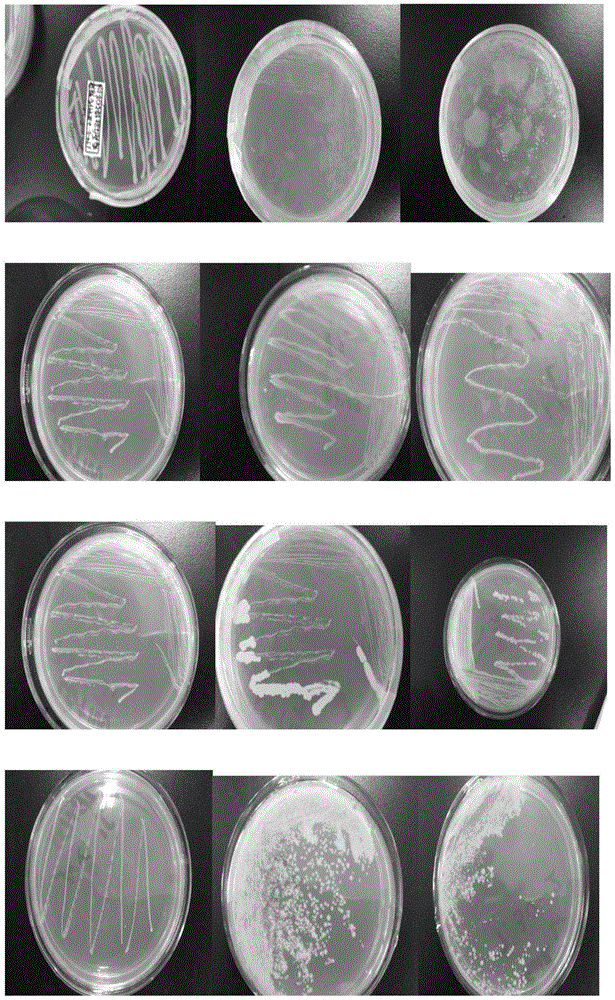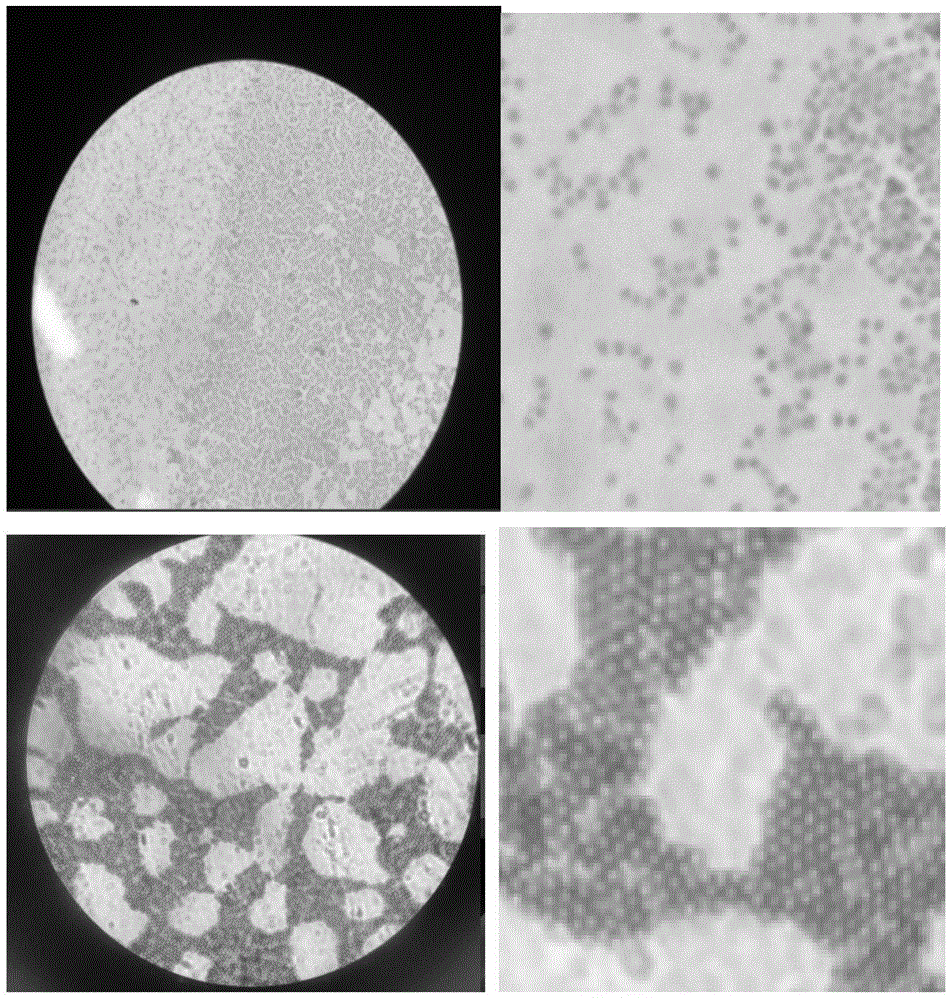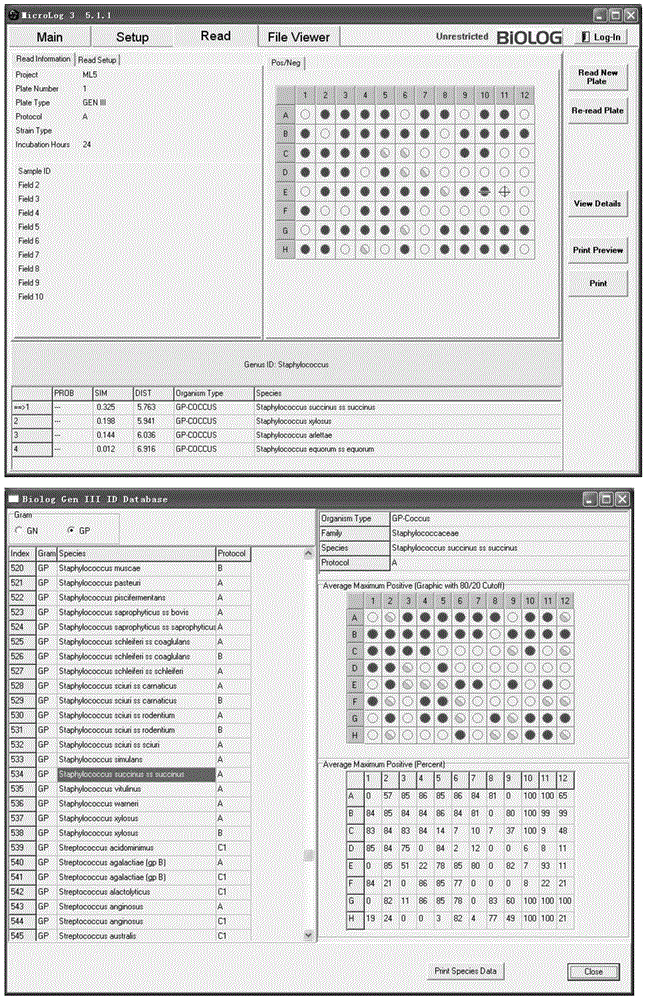A Strain of Staphylococcus equine and Its Application in Degrading Heavy Metal Ions
A technology of heavy metal ions and staphylococci, which is applied in the detection and application of microorganisms to achieve the effects of low cost, wide application range and high processing efficiency
- Summary
- Abstract
- Description
- Claims
- Application Information
AI Technical Summary
Problems solved by technology
Method used
Image
Examples
Embodiment 1
[0054] Embodiment 1: anti-heavy metal ion Cr 6+ strain screening.
[0055] 1 Experimental materials
[0056] 1.1 Experimental strains
[0057] Source of soil sample: Activated sludge from Nanjing Chengbei Sewage Treatment Plant
[0058] 1.2 Experimental Instruments
[0059] Pipette gun (Eppendorf, Germany); desktop high-speed centrifuge (Eppendorf 5417R, Germany) vertical pressure steam sterilizer (Shanghai Shen'an Medical Instrument Factory LDZX-50KBS) desktop constant temperature oscillator (IS-RSD3) UV-visible spectrophotometer ( Analytical balance (SHIMADZU AUY120) from Shanghai Mapuda Instrument Co., Ltd. UV-1100)
[0060] 1.3 Experimental reagents
[0061] Potassium dichromate (K 2 C r 2 o 7 ) Chemical reagents are analytically pure and calculate the mass fraction of metal ions, which are respectively dissolved in deionized water to form a 10g / L storage solution.
[0062] 1.4 Medium
[0063] Basal medium: LB medium (g / L)—peptone 10g, sodium chloride 10g, yeast ...
Embodiment 2
[0074] Embodiment 2: diphenylcarbonyl spectrophotometric method measures Cr 6+ concentration.
[0075] 2.1 Drawing of standard curve
[0076] Take nine 50ml colorimetric tubes, add 0, 0.2, 0.5, 1.00, 2.00, 4.00, 6.00, 8.00 and 10.00ml of chromium standard solution in sequence, add 0.5ml each of 1+1 sulfuric acid and 1+1 phosphoric acid, add 2ml for color development solution, shake well, and dilute to the mark with water. After 5-10min, measure the absorbance at a wavelength of 540nm, and make a blank correction. Draw a standard curve with the absorbance as the ordinate and the corresponding hexavalent chromium content as the abscissa.
[0077] 2.2 Determination of hexavalent chromium in the bacterial liquid supernatant
[0078] Take 200 μl of the overnight cultured bacterial solution in a 50ml colorimetric tube, and the determination method is the same as that of the standard solution. After blank calibration with distilled water, the hexavalent chromium content is check...
Embodiment 3
[0083] Embodiment 3: strain identification.
[0084] 16sRNA sequence analysis method: PCR amplification uses bacterial 16sRNA universal primers:
[0085] 27F (5'-AGAGTTTGATCMTGGCTCAG-3')
[0086] 1492R (5'-GGTTACCTTGTTACGACTT-3')
[0087] PCR reaction system (25 μL): 5× amplification buffer (5 μL),
[0088] Genomic DNA (0.1 μL),
[0089] dNTP (2μL),
[0090] Primer F (0.5μL),
[0091] Primer R (0.5 μL),
[0092] Taq DNA polymerase (0.25 μL)
[0093] Deionized water (16.65 μL)
[0094] Reaction conditions: pre-denaturation at 98°C for 10 minutes, deformation at 98°C for 10 seconds, annealing at 58°C for 10 seconds, extension at 72°C for 90 seconds, a total of 30 cycles, and full extension at 72°C for 10 minutes. The PCR products were sequenced by Nanjing GenScript Co., Ltd.
[0095] The measured gene sequence is shown as SEQ ID No:1.
PUM
 Login to View More
Login to View More Abstract
Description
Claims
Application Information
 Login to View More
Login to View More - R&D
- Intellectual Property
- Life Sciences
- Materials
- Tech Scout
- Unparalleled Data Quality
- Higher Quality Content
- 60% Fewer Hallucinations
Browse by: Latest US Patents, China's latest patents, Technical Efficacy Thesaurus, Application Domain, Technology Topic, Popular Technical Reports.
© 2025 PatSnap. All rights reserved.Legal|Privacy policy|Modern Slavery Act Transparency Statement|Sitemap|About US| Contact US: help@patsnap.com



